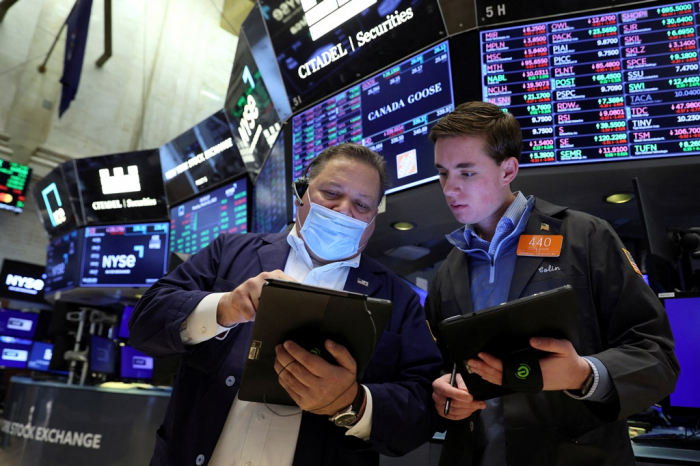Market Trend
Koreans return to foreign stock funds for bargain hunting
Funds for foreign stock investments log a net inflow of $3.5 bn until March 25 this year, indicating better sentiment on growth stocks
By Mar 29, 2022 (Gmt+09:00)
2
Min read
Most Read
LG Chem to sell water filter business to Glenwood PE for $692 million


Kyobo Life poised to buy Japan’s SBI Group-owned savings bank


KT&G eyes overseas M&A after rejecting activist fund's offer


StockX in merger talks with Naver’s online reseller Kream


Mirae Asset to be named Korea Post’s core real estate fund operator



That compared with the second half of 2021 when money had flowed into South Korean stocks and exchange-traded funds (ETFs) due to the weakness in US tech shares.
Funds for foreign stock investments saw a net inflow of 4.2 trillion won ($3.5 billion) until March 25 this year with 1 trillion won influx out of the total in the recent one month, according to market tracker FnGuide Inc. on Tuesday. Funds to invest in the local equity markets also reported a net inflow of 1.3 trillion won during the period, but they suffered a net outflow of 862.3 billion won in the recent one month.
INFLOW TO ETFS FOR FOREIGN STOCKS
In the ETF markets, the trend is more pronounced. ETFs for foreign stocks reported a net inflow of 3.6 trillion won, while the basket of securities for local markets logged a net outflow of 278.4 billion won with an outrush of more than 1 trillion won in the recent one month. That contrasted with the trend in the second half of last year.
“In the second half of last year when US tech stocks corrected, inflows to foreign stock funds had shrunk, while domestic stock funds, especially active ETFs, had seen inflows,” said Kim Hoo-jeong, a Yuanta Securities analyst. “But the volatility in local stock markets increased, raising outflows from domestic funds centered on ETFs.”
Among the funds for overseas stocks, ones to invest in shares in North America and China enjoyed large inflows. Funds for North America reported a net inflow of 2.3 trillion won and China funds logged a net inflow of 1.3 trillion won.
Such inflows indicated that investor sentiment on growth stocks, which were battered by the war in Ukraine and inflation, may have recovered enough to seek bargain hunting, analysts said.
“ETFs for US stocks, Chinese EVs and China’s STAR Market are in the spotlight,” Yuanta’s Kim said, referring to the Shanghai Stock Exchange Science and Technology Innovation Board, is a Chinese science and technology-focused equities market.
Write to Ji-Yeon Sul at sjy@hankyung.com
Jongwoo Cheon edited this article.
More to Read
-
 Korean stock marketETFs entice Korean investors amid volatile market
Korean stock marketETFs entice Korean investors amid volatile marketMar 21, 2022 (Gmt+09:00)
3 Min read -
 War in UkrainePerfect storm from Ukraine crisis clouds Korea Inc.’s outlook
War in UkrainePerfect storm from Ukraine crisis clouds Korea Inc.’s outlookFeb 25, 2022 (Gmt+09:00)
4 Min read -
 EconomyBOK sees inflation at 11-year high as oil tops $100 on Ukraine crisis
EconomyBOK sees inflation at 11-year high as oil tops $100 on Ukraine crisisFeb 24, 2022 (Gmt+09:00)
3 Min read
Comment 0
LOG IN


